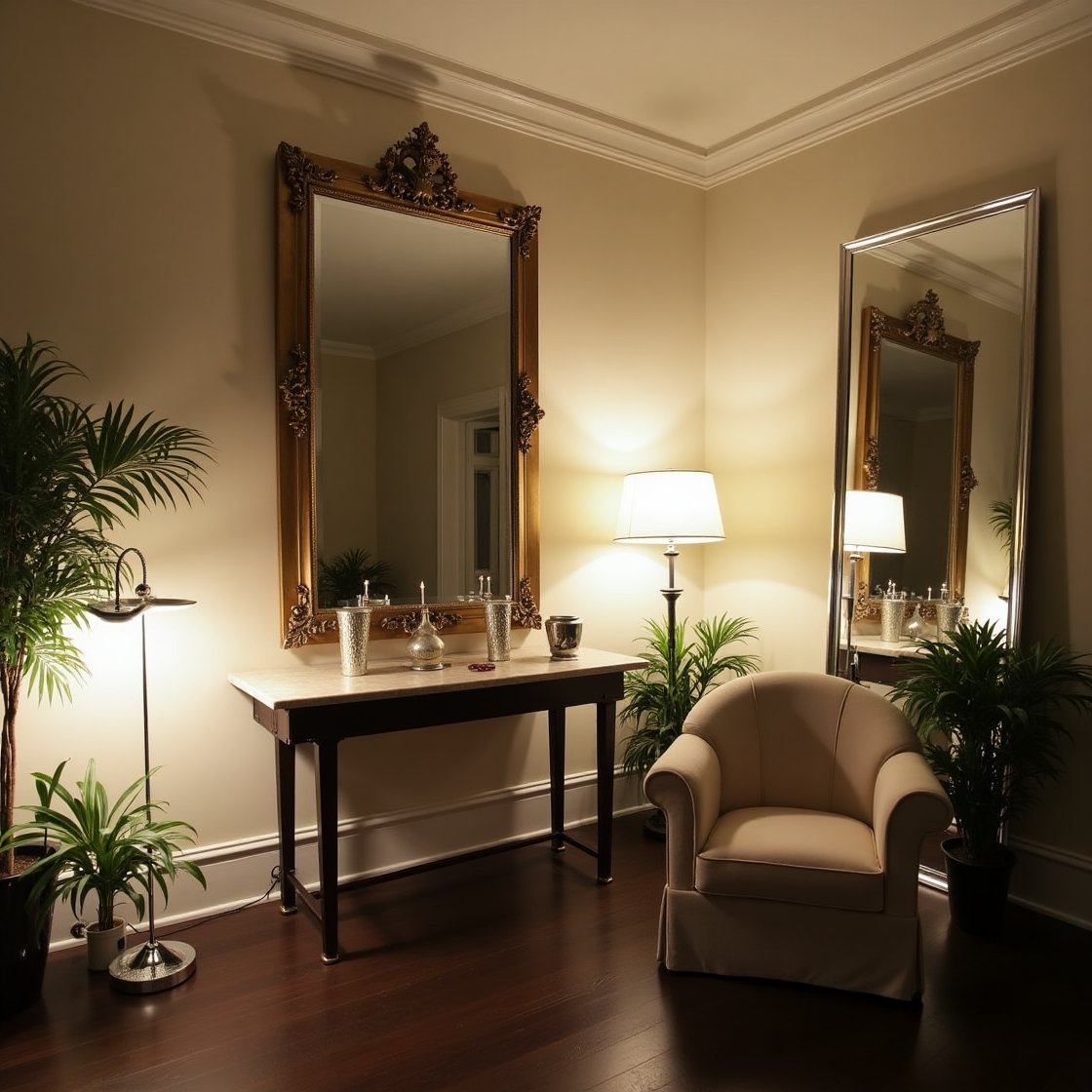Mirrors are one of the most versatile and powerful tools in interior design. Not only do they serve a functional purpose, but they also enhance light, create the illusion of more space, and add elegance or drama to your home—depending on how they’re used.
Whether you’re decorating a small room or looking to make a bold statement, mirrors can transform the way your space feels and looks. In this article, we’ll explore practical tips for using mirrors in decor to maximize both style and functionality.
Why Use Mirrors in Interior Design?
Mirrors aren’t just for checking your reflection—they’re design assets that:
- Bounce light around a room, making it feel brighter
- Create the illusion of more space, especially in small rooms
- Serve as decorative elements that reflect your style
- Add depth, symmetry, or drama to a wall or layout
Let’s break down how to use them effectively.
1. Use Mirrors to Reflect Natural Light
One of the best ways to brighten a room is to position a mirror where it can catch and reflect natural light.
Try this:
- Place a mirror opposite or adjacent to a window
- Use a large mirror in darker rooms to amplify daylight
- In rooms with little sunlight, pair a mirror with lamps or sconces to bounce artificial light
This trick is especially useful in narrow hallways, basements, or windowless bathrooms.
2. Make Small Spaces Feel Larger
Mirrors visually expand a room by giving the illusion of more depth. In small spaces, this can make a big difference.
Tips for maximizing space with mirrors:
- Lean a full-length mirror against the wall in a small bedroom or hallway
- Use mirror panels on closet doors or cabinet faces
- Try mirrored furniture to reflect light without overwhelming the room
This trick works wonders in apartments, entryways, and powder rooms.
3. Choose the Right Size and Shape
Mirrors come in all shapes and sizes—and the one you choose affects the impact.
- Large mirrors: Make a bold statement and reflect more light
- Round mirrors: Soften hard lines and add modern charm
- Rectangular or square mirrors: Offer structure and symmetry
- Geometric or decorative mirrors: Add personality and artistic flair
Scale is important. In large rooms, go for oversized mirrors. In smaller spaces, balance proportion with placement.
4. Use Mirrors as Focal Points
A beautiful mirror can serve as the centerpiece of a wall, much like a piece of art.
Try:
- A statement mirror above the fireplace mantel
- An ornate mirror above a console table in the entryway
- A large decorative mirror over a headboard in the bedroom
This draws the eye and adds elegance, even without additional decor.
5. Create a Mirror Gallery Wall
Instead of art, consider creating a gallery wall of mirrors. Mix different shapes, sizes, and frames to create a dynamic, light-reflecting display.
Style tips:
- Keep a consistent theme (e.g., all vintage, all black frames, or all gold)
- Space them evenly or cluster them organically
- Mix mirrors with art or photographs for variety
This idea works especially well in stairways, hallways, or living rooms.
6. Layer Mirrors with Other Elements
Mirrors don’t have to stand alone—they can complement other decor beautifully.
Combine them with:
- Shelving and plants
- Candle arrangements to reflect a warm glow
- Gallery walls with art and photographs
- Console tables with vases or lamps in front
This layered approach creates dimension and sophistication.
7. Think Beyond the Walls
You can also use mirrored surfaces in unexpected ways, such as:
- Mirrored trays on coffee tables or vanities
- Mirrored backsplashes in kitchens
- Mirrored tiles on feature walls
- Furniture with mirrored fronts, like dressers or nightstands
These touches enhance light flow and add glam without going overboard.
8. Keep It Clean and Strategic
Dust and smudges on mirrors can ruin the effect. Regularly clean with a lint-free cloth and glass cleaner.
Also, be mindful of what your mirror reflects:
- Avoid facing clutter, cords, or unappealing corners
- Reflect something beautiful—like a plant, piece of art, or window view
A well-placed mirror should enhance, not double the mess.
9. Use Mirrors to Add Symmetry
If your room feels unbalanced, mirrors can restore harmony.
Ideas:
- Hang two identical mirrors on either side of a fireplace
- Place matching mirrors above nightstands in the bedroom
- Use mirror pairs in a hallway for a balanced look
This creates visual order and draws the eye evenly across the space.
10. Play with Frame Styles
The mirror’s frame matters as much as the glass. Choose a style that complements your decor:
- Metallic frames (gold, black, brass) for modern or glam interiors
- Wood frames for rustic, boho, or coastal styles
- Minimalist frameless designs for a sleek, contemporary look
- Vintage frames for charm and character
Your frame choice is an opportunity to enhance your aesthetic without changing the entire room.
Reflect Beauty and Space with Intention
Mirrors are powerful tools in decorating—they offer light, style, space, and elegance in one simple object. By placing them strategically and choosing shapes, sizes, and frames that complement your space, you can completely transform a room without major renovations.
Remember:
- Use mirrors to amplify light and space
- Select shapes and styles that match your decor
- Create focal points or symmetry with statement pieces
- Reflect beauty—literally
With just a few mirrors, you can brighten up your home and give it the illusion of size, depth, and polish.
